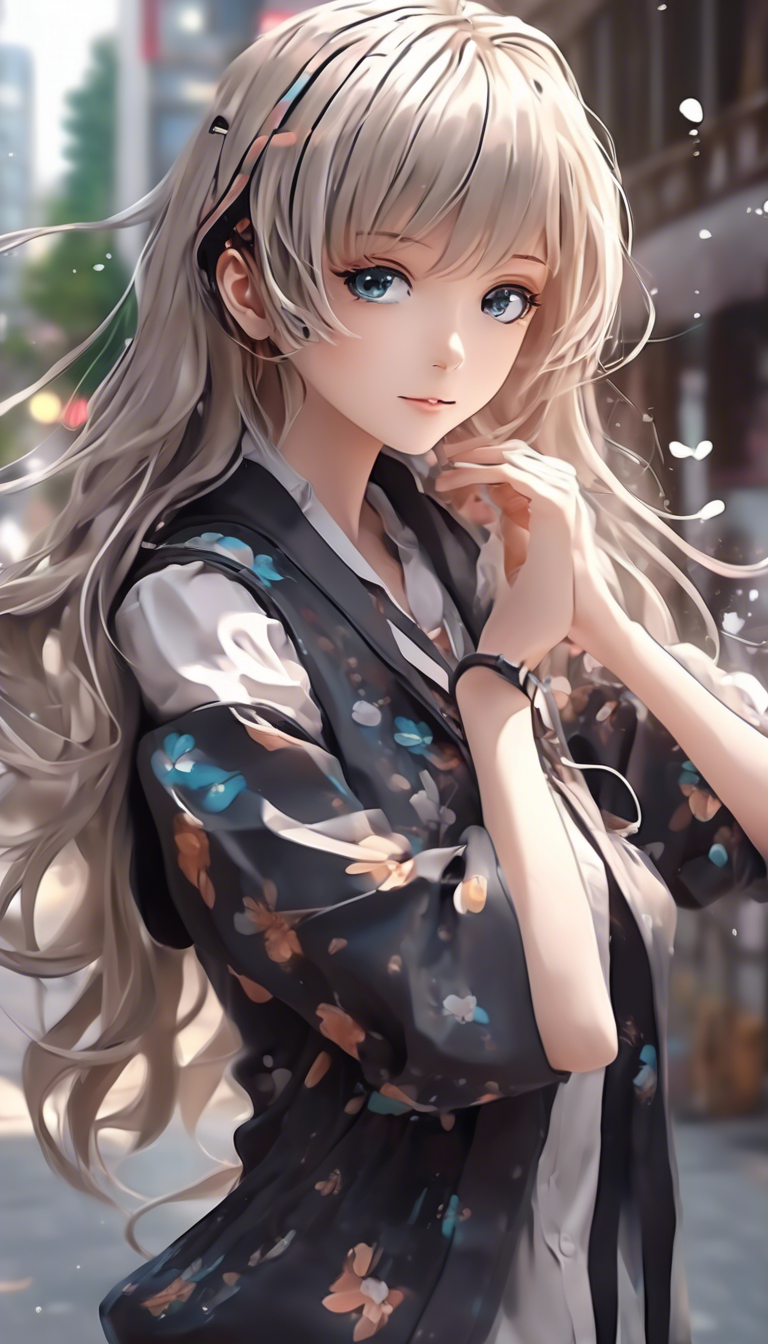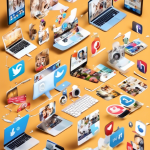The Evolution of AI Art in the Anime Industry
The anime industry has experienced a remarkable transformation over the years, and one of the most fascinating changes is the rise of AI art. This innovative approach is reshaping how anime creators and fans engage with the medium, sparking both excitement and curiosity. With AI tools becoming increasingly sophisticated, let’s explore how they’ve evolved and influenced the anime landscape.
Artificial Intelligence has made great strides in the creative arts, and anime is no exception. Initially, AI art tools focused primarily on generating simple images. However, as technology advanced, they began to produce more complex visuals, allowing artists to experiment in unique ways. Here are some key developments in AI art that are impacting the anime industry:
- Improved Image Generation: Early AI algorithms could create basic forms of art, but today’s systems can generate highly intricate and detailed visuals. High-resolution rendering allows for stunning backgrounds and character designs that captivate audiences.
- Style Transfer: AI techniques such as style transfer enable one artwork’s style to be applied to another. This means you could take elements from famous anime series and blend them with original creations, resulting in unique and exciting styles.
- Speed and Efficiency: For busy animators, AI tools can significantly reduce production time. By automating tedious processes like background generation, artists can focus more on storytelling and character development.
- Character Design: AI-driven tools can help creators design characters quickly. By inputting simple descriptions or sketches, artists can generate various character concepts, enhancing creativity and sparking inspiration.
As AI technology continues to evolve, one notable trend is the collaboration between human artists and AI. Many creators embrace these tools not as replacements but as partners. By doing so, they can push their boundaries and achieve results that are not only visually stunning but also emotionally engaging. You might wonder how this collaboration looks in practice. Here are some examples:
- AI-Augmented Artwork: Artists use AI to brainstorm and visualize new ideas. For example, a creator might input different character traits and style preferences into an AI tool, receiving multiple designs. They can then refine and modify these concepts to create something unique.
- Storyboarding Assistance: AI helps streamline the storyboard process by generating visual sequences from scripts. This allows creators to visualize scenes without spending hours on manual sketching.
The use of AI in anime has also opened doors for aspiring artists. With accessible tools available, anyone can create impressive visuals without needing years of experience. This democratization of art offers fresh voices and perspectives in the industry. However, it is essential to consider the potential challenges as well.
While AI art offers incredible potential, it is essential to approach its use thoughtfully. Some concerns include:
Join our amazing AI and Automation Community
- Copyright Issues: As AI learns from existing artwork, there is an ongoing debate about ownership and originality. It raises questions about who owns AI-generated art and how to protect the rights of the original creators.
- Loss of Human Touch: Some purists worry that relying too heavily on AI might lead to a decline in traditional artistic techniques and the emotional depth that human artists offer.
Despite these concerns, the integration of AI in the anime industry appears to be a lasting trend. Many studios are experimenting with AI tools to enhance not only their creative process but also the overall viewing experience for audiences. An exciting example is AI-generated trailers that can adapt to target audience preferences, creating personalized content.
Another area where AI is making an impact is in fan art. With the rise of AI art generators, fans can create their versions of beloved characters or scenes, breathing new life into existing franchises. This phenomenon reinforces a sense of community, allowing like-minded individuals to share and celebrate their passion for anime.
As we continue to witness the evolution of AI art in the anime industry, one thing is clear: the synergy between human creativity and artificial intelligence is transforming the mediums we love. You can expect new styles, innovative storytelling methods, and an ever-growing array of artistic expression coming to life. The future of anime art is bright, and with it, the possibilities are endless.
How AI Art Tools are Reshaping Character Design in Anime
In recent years, the rise of artificial intelligence has dramatically transformed various creative fields, including anime character design. This innovative technology is proving to be a game changer, providing artists with tools that enhance their skills and creativity. AI art tools not only speed up the design process but also allow creators to experiment with styles and techniques that they may not have considered otherwise.
AI art tools work by analyzing a vast amount of existing artwork and learning specific patterns that define styles. For instance, when it comes to anime, these tools can learn from various popular series and character designs, synthesizing elements to produce unique characters. Artists can leverage these tools to generate initial concepts, allowing them to focus on refining ideas instead of struggling with the basics of design.
Join our amazing AI and Automation Community
One of the key benefits of using AI in character design is the ability to brainstorm multiple variations quickly. Imagine being able to see several takes on a character in minutes rather than spending hours drawing each one from scratch. This not only saves time but also enriches the creative process, as artists can quickly assess what works and what doesn’t. Below are a few ways AI art tools are shaping the landscape of anime character design:
- Efficiency: AI tools significantly reduce the time taken to create character designs. Artists can produce a draft in just a fraction of the time it traditionally would take, allowing for quicker iteration and refinement.
- Expanded Creativity: By generating many variations, artists can explore different styles, color palettes, and shapes, unlocking new inspirations that may not have been considered otherwise.
- Collaboration: AI tools serve as collaborative partners. They can help establish a starting point for the artist, who can then add their unique flair, creating a more dynamic and personalized design process.
- Accessibility: These tools are making character design more accessible to those who may not have formal training in art. Beginners can use AI to create character concepts, providing them with a starting point to build their skills.
As the technology develops, we are seeing more sophisticated AI tools that can even take concepts from sketches or verbal descriptions. This capability allows artists to create complex characters merely by describing their traits. For instance, if you want a character with bright blue hair and oversized glasses, the AI can generate designs that match your vision. This feature not only streamlines the design process but also fosters an inclusive environment where anyone can contribute to character creation.
Despite these benefits, there are discussions within the artistic community about the implications of using AI tools. Some traditionalists worry that reliance on technology might diminish the authenticity of art. However, many artists see AI as a tool rather than a replacement. It’s about blending human creativity with advanced technology to produce unique outcomes. This partnership can lead to groundbreaking results in character design.
The advent of AI art tools has also sparked new dialogues around copyright and originality. As these tools become more pervasive, it’s essential for artists to understand the legal implications of using AI-generated art. Ownership of AI-generated designs remains a complex issue, but it encourages artists to navigate this new frontier thoughtfully.
Join our amazing AI and Automation Community
Looking forward, AI art tools will likely continue to evolve, bringing even more changes to anime character design. We can expect increased personalization, allowing creators to tailor characters down to the finest details. Furthermore, AI’s ability to analyze viewer trends could help artists understand what character designs resonate most with the audience, leading to more impactful and relatable characters.
The integration of AI in anime character design represents a blend of technology and artistry that fosters creativity while addressing the practical concerns of time and efficiency. Whether you’re a seasoned anime artist or a newcomer to the realm of character design, embracing these tools can expand your possibilities. By allowing AI to handle repetitive tasks, you can dedicate more time to what you love – bringing your characters to life!
Conclusion
The fusion of AI art and the anime industry marks an exciting chapter in creative expression. Over the years, AI technology has evolved from simple image generators to sophisticated tools that enhance the artistic process. This evolution has not only reduced the time and effort spent on creating intricate visuals but also opened doors for fresh styles and innovative storytelling methods.
As AI art tools become more accessible, character design in anime is witnessing a transformation. Artists are now able to experiment with diverse aesthetics and streamline their workflows, leading to unique characters that resonate with viewers. These tools offer a playground for creators, allowing them to explore ideas that may have seemed daunting or time-consuming in the past. By integrating AI art into their workflow, illustrators can focus more on the narrative aspects, thereby enriching the overall experience for the audience.
What’s particularly exciting is the potential for collaboration between human creativity and AI capabilities. This partnership encourages a new generation of artists to embrace technology without sacrificing their artistic vision. As the anime community continues to adapt and grow, we can look forward to even more breathtaking visuals and stories that capture our imagination. The future of AI art in anime seems boundless, promising innovative narratives and stunning character designs that will engage audiences for years to come. Embracing this change can lead to a vibrant blend of tradition and innovation, redefining what anime can be in the digital age.


